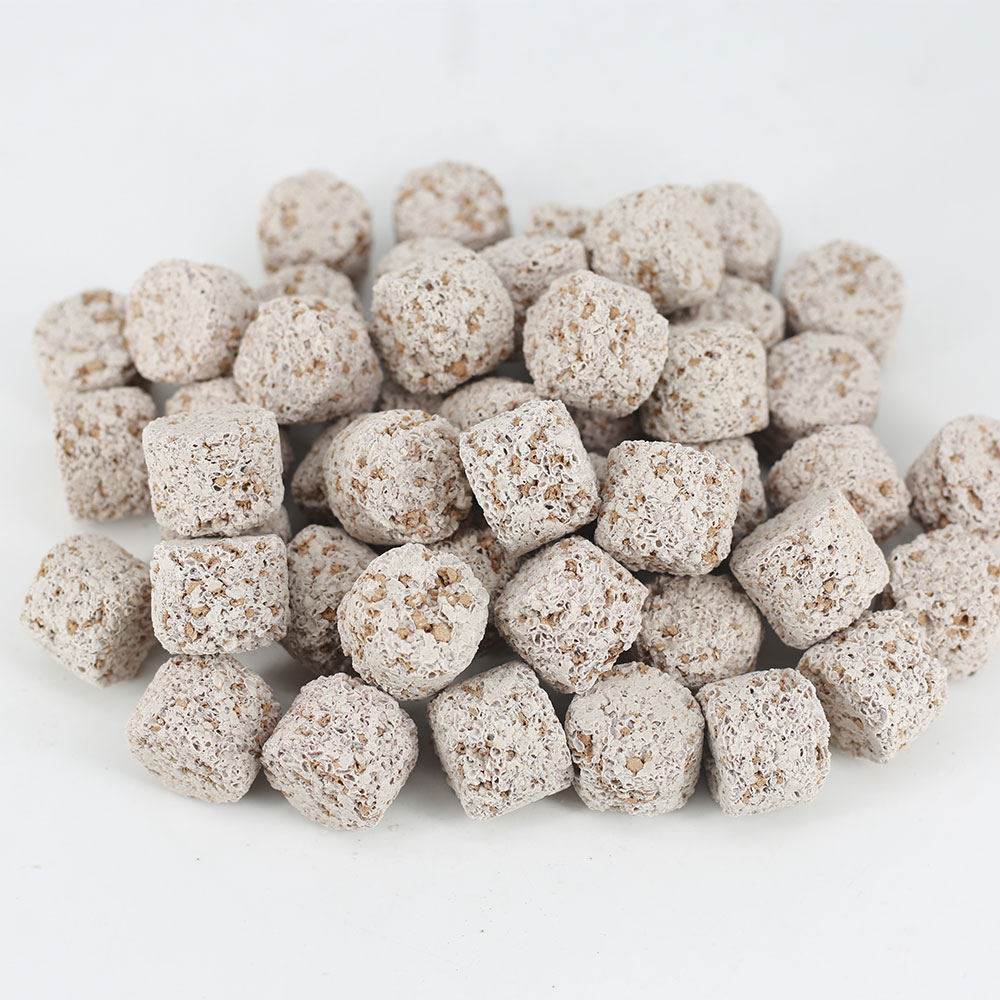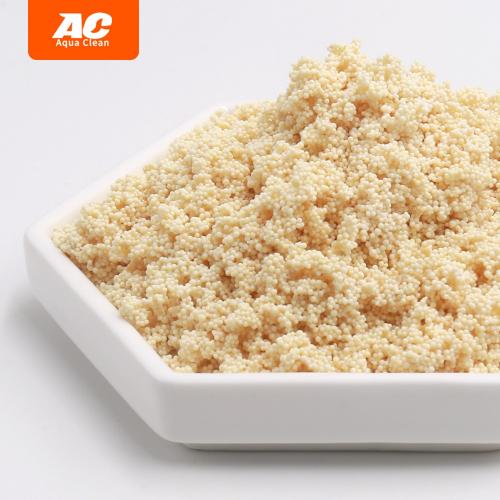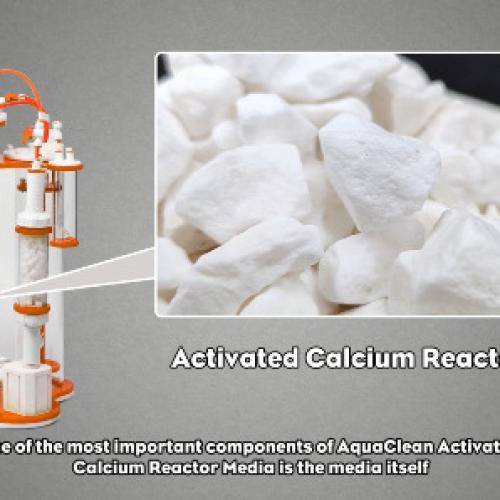Say Goodbye to Aquarium Algae Bloom! AC PO4 Filter Media: Protect Fish Tank Water Quality from the Root, Achieving Both Bacteria Cultivation and Efficient Phosphate Removal
Update time: 25-10-24 Views: 112
For every aquarium enthusiast, "maintaining water quality" is the core of keeping fish and shrimp healthy—who wouldn't want their fish tank to have clear water, lively fish, and lush aquatic plants (or gorgeous corals)? But the reality is often: just after solving the ammonia-nitrogen problem, the fish tank suddenly breaks out in brown or green algae, the water becomes turbid, the fish lose vitality, and even die inexplicably... In fact, there is an easily overlooked "invisible killer" behind this—excessive phosphate.
Phosphate: The "Invisible Destroyer" of Aquatic Ecosystems
Why does phosphate become a "troublemaker" in fish tanks? Let's first understand its sources: uneaten leftover food, fish and shrimp feces, decaying aquatic plants/coral fragments in the tank, and even some tap water used for water changes will continuously release phosphate. When the phosphate concentration in the water exceeds the safe threshold (>1mg/L for freshwater tanks, >0.1mg/L for saltwater tanks), problems will follow:
- Algal blooms : Phosphate is a "nutrient" for algae. When excessive, brown and green algae will quickly cover the tank walls, aquatic plant leaves, and filter media, not only affecting the ornamental value but also competing for oxygen in the water, leading to fish and shrimp hypoxia;
- Destruction of water quality stability : A high-phosphorus environment will inhibit the activity of beneficial bacteria (such as nitrifying bacteria), disrupting the balance of the nitrification system and indirectly causing the accumulation of ammonia nitrogen and nitrite, forming a "vicious cycle of water quality";
- Threat to biological health : Long-term high-phosphorus water quality will reduce the immunity of fish and shrimp, increasing the risk of fin rot and enteritis, and it is even a "fatal blow" to sensitive corals and ornamental shrimp.
Traditional phosphate removal methods are either slow (such as relying solely on water changes) or easy to "attend to one thing and lose sight of another" (such as ordinary phosphate-removing filter media can only adsorb phosphorus but cannot maintain the nitrification system). It is not until the emergence of AC PO4 Filter Media that the dual needs of "efficient phosphate removal + bacteria cultivation and water protection" are truly realized.
AC PO4 3D Filter Media: Two Core Technologies to Solve Aquarium Phosphate Problems
As a leading brand in China's aquarium filter media industry, AC (Aqua Clean) relies on the technical support of the National Industrial Ceramic Research Center and has been deeply involved in the aquarium filtration field for more than ten years, serving more than 50 regions and 378+ partners worldwide. This PO4 filter media is an innovative product developed by AC for the pain point of "high-phosphorus algae blooms", and its technical principles and actual effects precisely match the core needs of aquarium enthusiasts.
1. Microorganism + Nano-catalysis: Two-pronged Approach for Rapid Phosphate Reduction Without Rebound
Most ordinary phosphate-removing filter media rely on a single "physical adsorption", which is easy to fail due to adsorption saturation and even release phosphorus reversely. AC PO4 Filter Media adopts a dual mechanism of "microbial denitrification and phosphate removal + nano-catalytic materials":
- On the one hand, the efficient denitrifying bacteria colonized in the filter media can convert phosphate into harmless nitrogen gas through biological metabolism, reducing phosphorus accumulation from the source and avoiding the problem of "adsorption saturation";
- On the other hand, the specific nano-catalytic materials added to the filter media can accelerate the decomposition and conversion efficiency of phosphate. Compared with traditional filter media, the phosphate removal speed is increased by more than 30%, and the phosphate concentration in the water can be quickly reduced to a safe value (<1mg/L for freshwater tanks, <0.1mg/L for saltwater tanks), effectively preventing algae blooms.


Whether it is a freshwater planted tank, a saltwater coral tank, or an outdoor pond, this filter media can be adapted to completely solve the problems of "slow phosphate removal and easy rebound".
2. Three-dimensional Pore Structure: Create a "Super Habitat" for Beneficial Bacteria
The long-term stability of aquarium water quality depends on a strong nitrification system—and the number of nitrifying bacteria directly depends on the "colonization space" of the filter media. AC PO4 Filter Media adopts a special sintering process to form a three-dimensional interconnected microporous structure. The specific surface area of each gram of filter media can reach 2-3 times that of ordinary filter media, which can provide a "living space" for billions of nitrifying bacteria and denitrifying bacteria:
- Large-diameter pores facilitate the smooth passage of water flow, allowing bacteria to fully contact pollutants;
- Small-diameter micropores can firmly lock bacteria, preventing them from being lost with the water flow, and quickly establishing a stable nitrification-denitrification system.
This means that AC PO4 Filter Media can not only "remove phosphate" but also "cultivate bacteria" simultaneously—while removing phosphate, it continuously decomposes ammonia nitrogen and nitrite, achieving "dual use of one medium" and keeping the water quality clear and transparent for a long time, reducing the trouble of frequent water changes.
Why Choose AC? It's More Than a Filter Media, It's a "Guardian" of Aquatic Ecosystems
For aquarium enthusiasts, choosing a filter media depends not only on its effect but also on "safety" and "stability":
- Safe without secondary pollution : AC PO4 Filter Media has undergone strict water compatibility testing and will not release harmful substances such as aluminum and heavy metals into the water. It is non-irritating to fish, shrimp, corals, aquatic plants, and other organisms, and can be used with confidence in pregnant fish tanks and fry tanks;
- Strong adaptability : It can be easily adapted to hang-on filters, canister filters, bottom filters, and even pond filtration systems. It can be used without modifying the equipment, and can be used after being cut to a suitable size;
- Long-lasting and durable : Relying on the dual mechanism of "biology + catalysis", the service life of the filter media can reach 2-3 months (depending on the phosphorus concentration in the water). Compared with ordinary adsorption filter media, the replacement frequency is reduced by 50%, making it more worry-free and cost-effective.
From research and development to production, AC has always aimed at "creating global Class A aquarium filter media". This PO4 filter media is a deep combination of "technological innovation" and "user needs"—allowing beginners to easily maintain water quality and enabling senior players to get rid of "algae bloom anxiety", truly enjoying the fun of aquarium breeding.
Only when the water is well maintained can the fish be well raised. AC PO4 Filter Media is not only a "phosphate removal tool" but also a "good helper" for protecting the aquatic ecosystem—it uses microbial and nano-catalytic technologies to solve the problem of phosphate removal and uses a three-dimensional pore structure to lay a solid foundation for bacteria cultivation, allowing every aquarium enthusiast to easily have "crystal clear water".
If your fish tank is troubled by algae blooms and turbid water, you might as well try AC PO4 Filter Media and let professional filter media "escort" your aquatic world!





